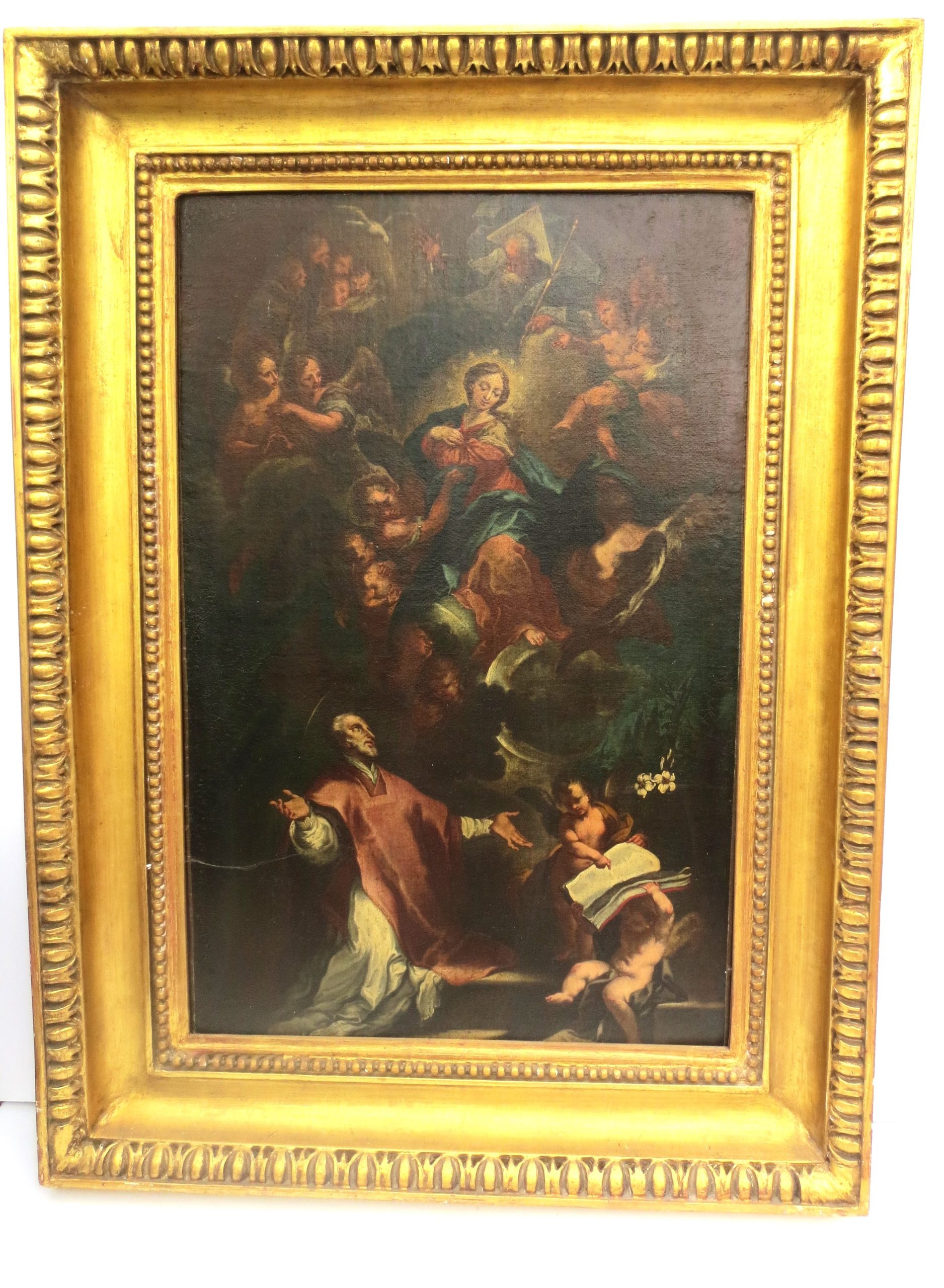Born in Gaeta between Rome and Naples, Conca trained with and then assisted Solimena in Naples until relocating to Rome in 1707; remained active in Rome and southern Italy until his death in Gaeta in 1684. The master of large complex compositions that gave energetic contrasts of light and dark, motion and poise to gracefully integrated large casts of well-conceived and -drawn actively expressive figures.
The composition of the present painting offers a small version of the immense altarpiece St. Philip Neri’s Vision of the Virgin painted by Conca for the major altar in the oratorio di San Filippo in Torino (520 x 257 cm = 204 ¾ x 101 ¼ in = 17 x 8 ½ feet). Several; aspects of the present rediscovered painting indicate an original bozzetto for the vast undertaking involved in painting, no doubt with atelier assistants, the immense canvas in Torino.
First, the scale of the present painting would be appropriate for a fully worked out preparatory study for the execution of a large-scale work with designated assistance. Secondly, although several variant versions of this composition were also painted for chapels affiliated with the Oratorian Order founded by Neri, only the present painting concurs in all major and almost all secondary details of basic composition, placement and poses of the figures, and the critical distribution of chiaroscuro contrasts within the draperies assigned each figure as a guide to its form and function within pictorial space. Variations determined by practicality include the truncation of the arched top, for which no specific modello was needed, and the generalized indication of the angelic forms and faces in the upper regions as easily determined in the finishing, perhaps assisted, phases of the painting campaign. The paint surface itself shows throughout the direct and certain touch of a well laden brush, more powerfully secure of directed purpose than the normally tepid unmodulated consistency of a posterior copy.
(For the Torino altarpiece and all other matters pertaining to it, its variant analogues and Conca’s art in general, cf. the voluminous catalogue of the exhibition Sebastiano Conca (1680-1764), Palazzo de Vio, Gaeta, 1981, with numerous illustrations, transcriptions of documents, analytic entries by a host of first line scholars concerned with the art of the Roman-Gaeta-Naples axis. The Torino altarpiece is discussed and dated as N. 38 on pp.164 -165, where its origin is dated by documentation to 1722 – 1723, providing a secure terminus ante quem for the preparation of the bozzetto introduced here.

